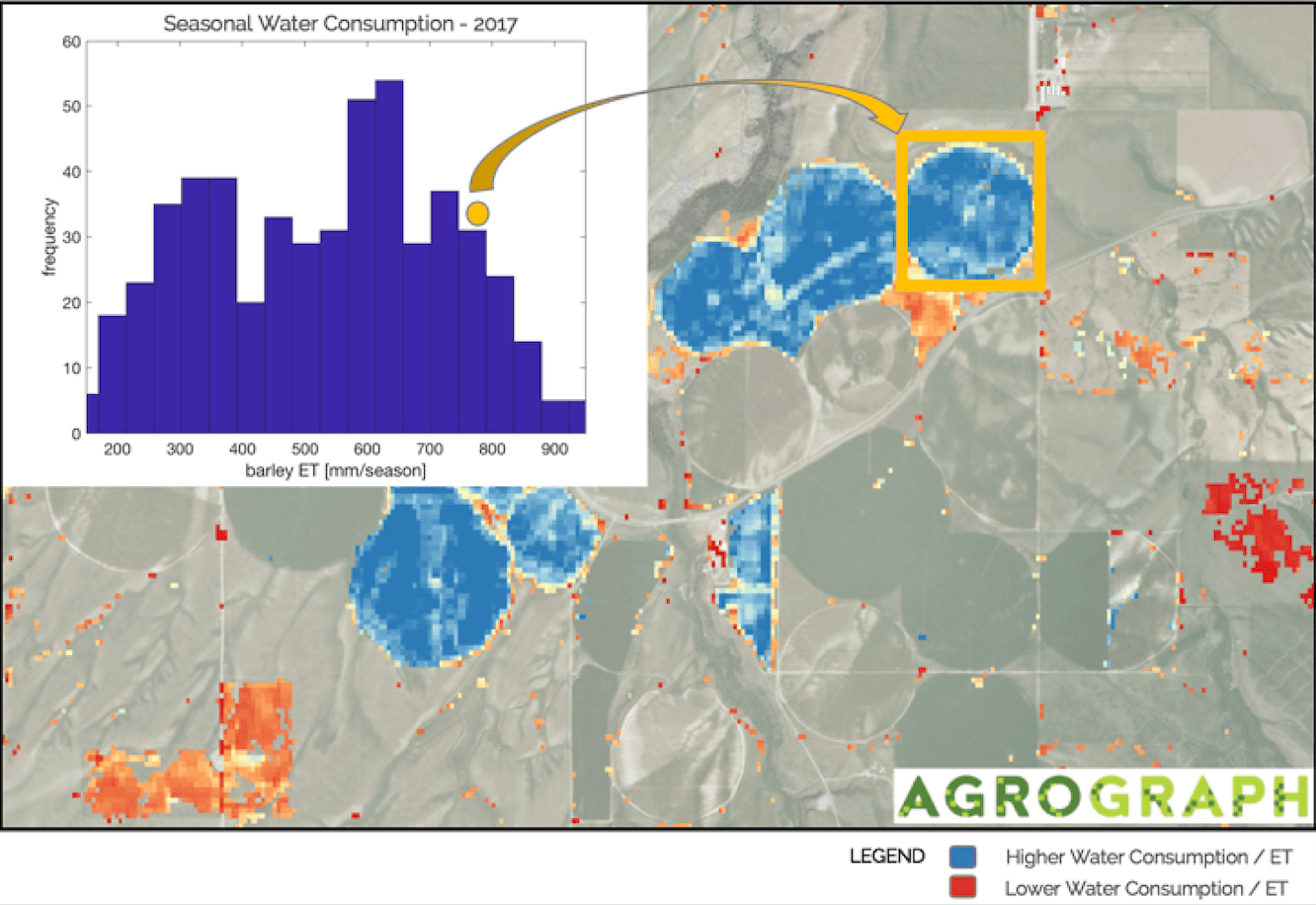Minimal and efficient water usage is top of mind for companies and businesses striving for a more sustainable business model. Companies like Anheuser-Busch and MillerCoors set lofty goals to cut water usage and increase water quality across their respective supply chains - a commitment that becomes complicated quickly. Agrograph has created a new solution utilizing satellite imagery and machine learning models to help the beer industry meet their water sustainability goals.
That is because water is at the heart of beer production, from growing key ingredients like malted barley and hops, as well as the sanitation and regulation requirements at the brewery. Brewers continuously work to address water use efficiency across the supply chain, but the last mile problem for sustainable water efficiency occurs in the field, not at the factory.
For years brewers attempted to assess water sustainability at the field level. However, in the drought prone regions of the Western U.S. (Montana, Idaho, Colorado, North Dakota and Wyoming) where brewers contract with local farmers to source barley, rice and to a lesser extent hops, growers depend heavily on irrigation systems to ensure yield and quality standards. The use of water guarantees premium returns on contracted acres. Herein lies both the challenge and shared responsibility -- how to minimize water use and maximize yields to meet sustainable production targets.
With Agrograph field-level sustainability for water-dependent crops is within reach. Agrograph’s data solutions benefit the brewer and the grower by providing precise, field-level seasonal water consumption data, that identifies excess water use and helps to address that last mile problem.

Seasonal water consumption of all irrigated barley fields in Madison County, Idaho. Graph compares highlighted field water usage against all fields in county.
This solution allows brewers to support contracted growers as they adopt best management practices for water use efficiency. With Agrograph data, brewers identify and advise growers on water use efficiency metrics throughout the growing season. This data includes entire regions, states, and even global production models, and sets benchmarks and analysis to explore various water application scenarios. This allows brewers to provide growers with critical data points that illustrate the best use of water resources. This information allows growers to adjust water application in real time to improve sustainability. Thus, growers continue to make decisions best for their operation, while brewers invest in their success.
Prior to Agrograph, brewer access to field-level data was limited. To model a descriptive dataset to inform field-level sustainability decisions required brewers to request information from every contracted grower. Depending on the company, contract growers could range from 800 to 50,000 and span across multiple states and multiple countries. Even more, requesting data in real-time and accounting for granular factors proved difficult to scale across an industry. With Agrograph’s platform, data is instantaneously available across different time zones and regions, and processed, analyzed and returned as a quantifiable metric that measures sustainability in the field.
These data points do more than simply measure sustainability. Agrograph’s data can demonstrate the commitment of farmers to maintain healthy, productive, and profitable operations year over year. That’s because Agrograph’s data is retrospective, drawing from historical metrics to show progress over time and recognize farms for their commitment to continuous improvement.
The American Indians had it right -- we are only caretakers of the land -- if we respect and maintain it, it will support our way of life and pass on that way of life to our next generation. And that is what today’s farmers want to do - build a sustainable operation.




